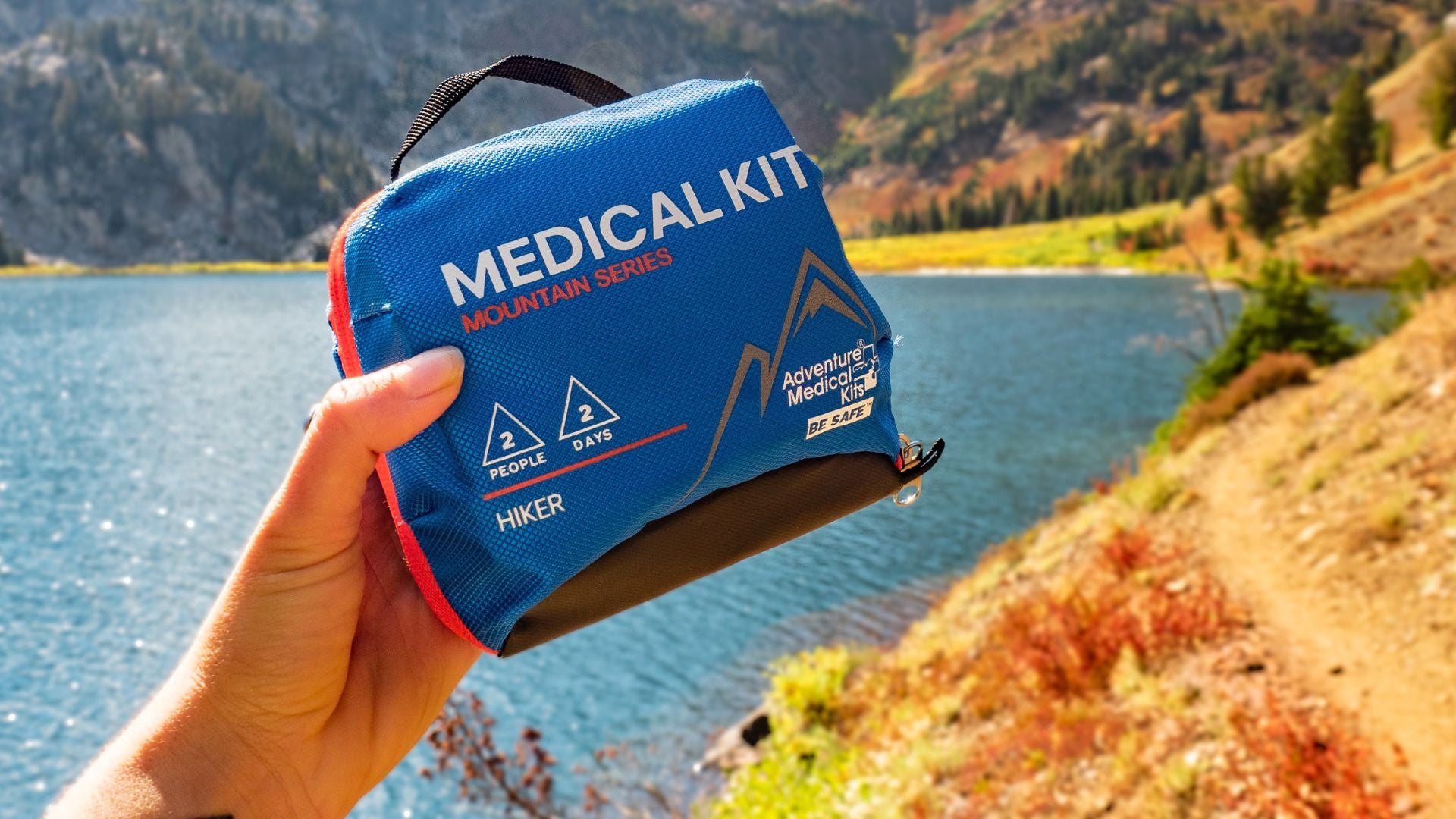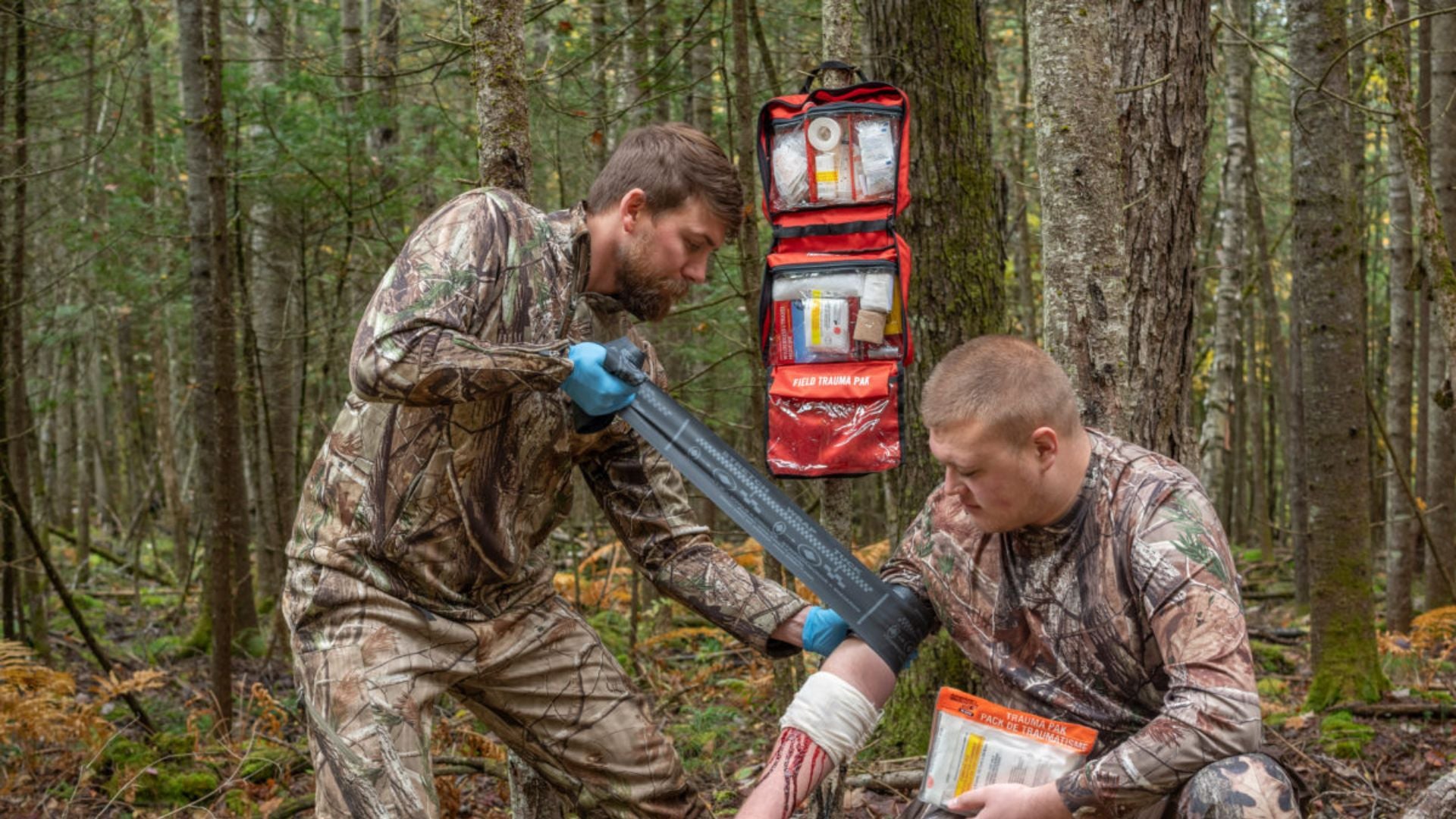By Hilaree Nelson
Yes to Adventure!
When one of the greatest women adventurers of the 21st century emails you asking for safety supplies in support of a ground-breaking, never-been-done-before skiing Lhotse expedition, there’s only one answer – YES! When we at Adventure Medical Kits got that call requesting medical kits and bivvies, our psych level went through the roof because we knew if anyone could do this, it was the person on the other end of the phone.
In 2018, ski mountaineers Hilaree Nelson and Jim Morrison completed the first ski descent from the summit of Lhotse, the fourth-highest mountain in the world – the path to achieving that goal began further back.
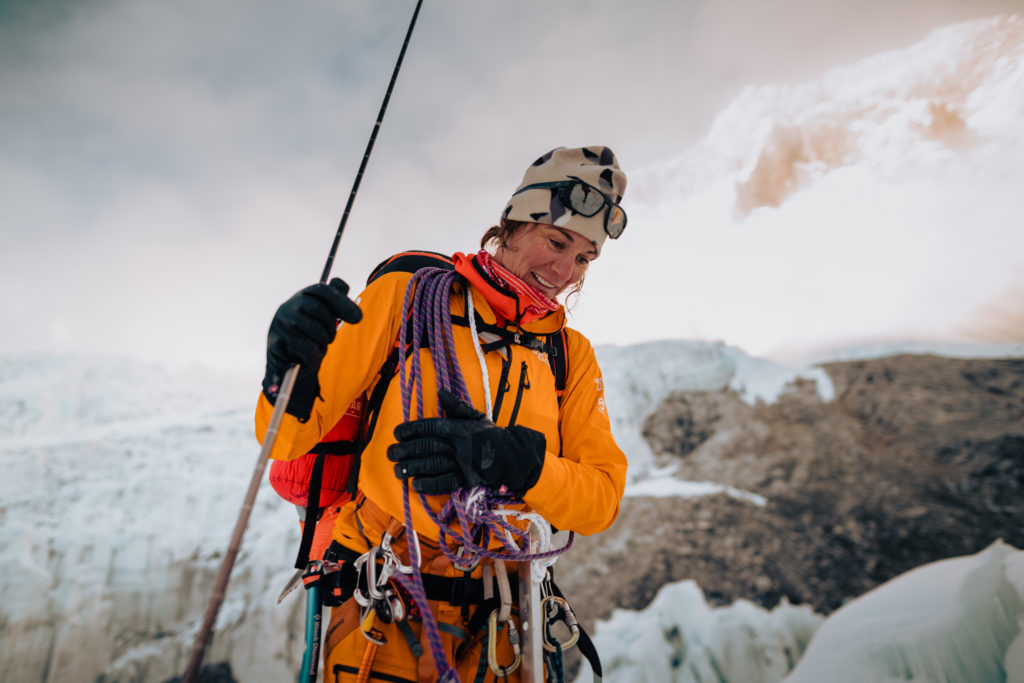
We asked Hilaree about her preparations for skiing Lhotse and what helped her succeed, in training and on the mountain – here’s what she said:
Q&A with Hilaree Nelson
- How do you define “adventure”? What does it mean to you?
I like to throw out a wide net when defining adventure. To me, anything that gets your heart-rate up, involves some risk, requires quick thinking, and has some element of being in way over your head: that’s an adventure.
- We were all thrilled when you successfully completed the ski descent of Papsura. Why did you pick skiing Lhotse as your next challenge?
Lhotse and the Lhotse couloir has been on my mind for many years. I followed Jaime Laidlaw’s attempt in 2007; I first climbed Lhotse in 2012 – I have a long history with the mountain. After Papsura, which still is the scariest and hardest thing I have ever done, Lhotse seemed like the natural next step.
- How do you prepare mentally and train physically for a high-elevation ski tour of this magnitude?
I live in Telluride, CO, which I am very appreciative of because it’s ideal for high altitude training. My home is at almost 9000 feet, and everything is up from there. Lhotse was in the fall so it was difficult to train on skis but, with Jim Morrison, we would do a lot of “climb high, stay high” days where we’d tackle multiple 13,000 ft. mountains on one effort. The rock on these peaks isn’t so great, which was good for working on the mental toughness. We sought out places with lots of exposure and just kept at it until we were ready for Lhotse.
- Do you have any training tips or suggestions on preparing and staying motivated?
My best tips are to find solid people to go in the mountains with, but I know that isn’t always easy. Friends help keep me motivated. Another tip for motivation is to sign up for something that you have to train for: a marathon, a specific rock climb, bike race, etc. That sometimes works two-fold – it keeps you motivated and it helps you find people with the same goal to train with.
In terms of training, I always think variety! Do different things because that trains your body outside of your specific sport. I swim, road bike, mountain bike, run, hike, climb, ski, etc. That keeps it fun.
Also, don’t over complicate your training. I like to monitor my heart rate and keep track of miles, but I also just have fun and go easy on myself when I need to.
- What were the hardest gear choices you had to make when preparing to ski Lhotse?
We were trying really hard to stay as light as possible. The hardest gear in that realm were ski boots, tents, and outerwear.
- We have a hard-core hiker in the office who actually won’t leave the trailhead if she doesn’t have multiple tubes of Blistex. Do you have a personal/unusual item that always has to go with you on expeditions?
Eye cream and a pee bottle:)
- Why did you choose the Adventure Medical Kits Mountaineer as your expedition kit?
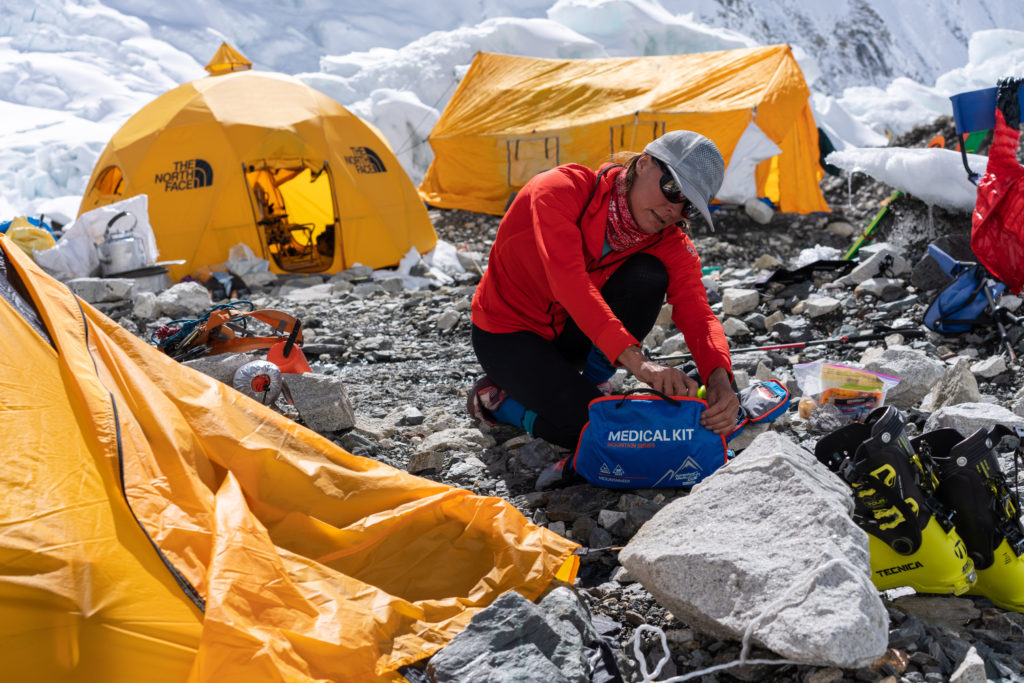
I’ve used the Mountaineer for a long time. I find the tote bag really convenient to organize everything we will need as a team in terms of medical supplies. I typically uses the expedition kit to feed the smaller kits that move higher up on the mountain and, overall, it’s a great system.
- Was there anything you added to the kits to meet your team’s specific needs?
I added epi-pens to the kit because of allergies that one of our team members had. I also tend to add extra aspirin and Advil because that is something used fairly extensively at high altitude for headaches and discomfort.
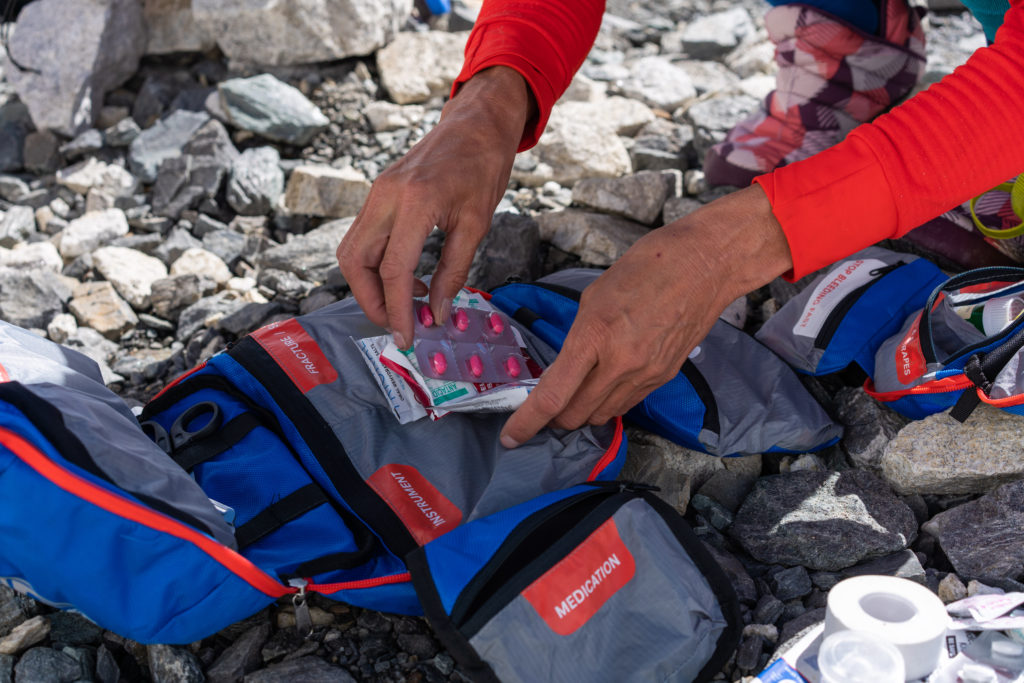
I always add pepto-bismol tablets to help with stomach and often a personal probiotic as well. I will always add an extra trauma pak and QuikClot also due to the nature of we are attempting.
- Did you or your team need to use the Mountaineer (or any of the other kits) at any point on your trip? If so, what did you use?
Fortunately we didn’t have to use the Mountaineer kit for anything other than routine expedition stuff. For example: lots of bandages and triple antibiotic ointment, as well as aspirin and blister repairs.
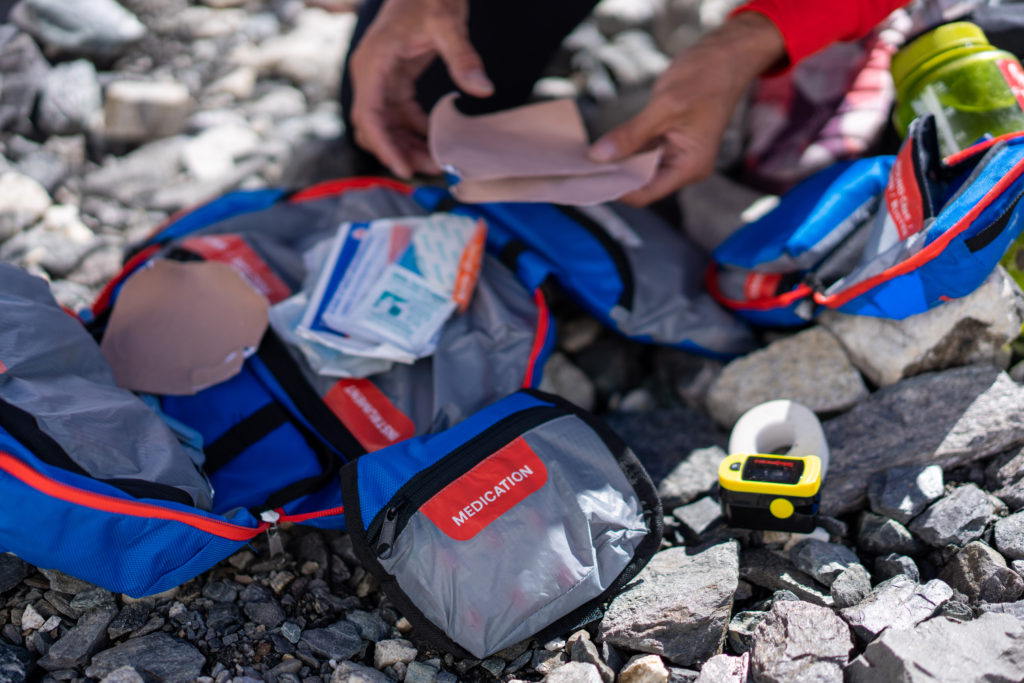
- You had originally intended to complete the expedition without using oxygen. At what point did you realize you needed to change plans in order to accomplish your goal of skiing Lhotse and be safe, and how did you make that decision?
About 10 hours into the climb on our summit day, we came to the conclusion that, in order to be successful at the skiing, we were going to have to use oxygen. The main reason for this was that we were dramatically slowing down at almost 26,300 feet. We knew we needed to summit before 2 pm, because there was weather coming in the form of wind and because we needed to descend at a time when the Lhotse face still had sun on it in order to have the best visibility for discerning blue ice from ski-able terrain.
Another factor in our slowing down besides just the elevation was that, as we changed aspects from west to north facing, the snow became incredibly challenging to climb through. This added to our fatigue and our slowness.
- What was the scariest/most dangerous moment of the expedition?
On our first trip through the icefall, we got a late start. As soon as the sun hit the far side of the route, it let loose an avalanche of rocks that went out into our route like a series of missiles. I moved as fast as I could to seek cover under an ice serac, but one rock almost hit our cameraman. It was really unnerving.
- Congratulations on accomplishing such an amazing goal! At what point did it sink in for you that you were actually going to be the first to accomplish a Lhotse ski descent, and how did that feel?
Once we made it to the summit, I think I realized that we would actually ski the route in it’s entirety. It was a good thing that revelation hit us at that moment, because it infused us with energy much needed in order to make the skiing a reality.
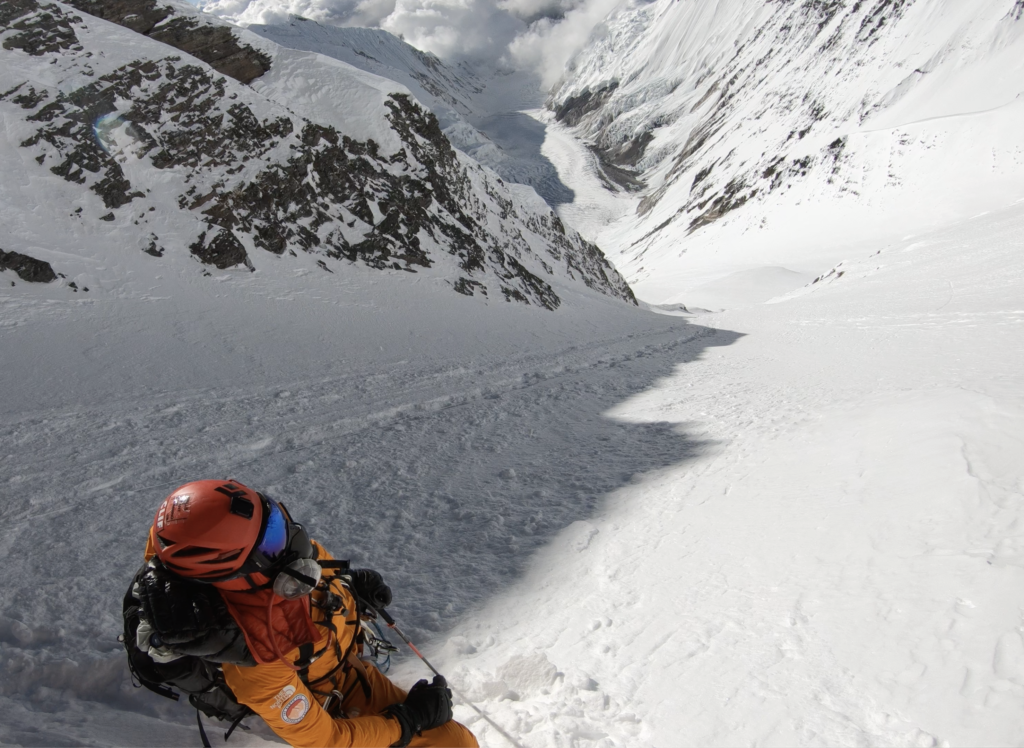
- If you did it again, what would you do differently?
Wow. I would probably try without oxygen again. I honestly can’t say what I would do differently. I feel like we worked so hard and also got so lucky. We had an amazing team, and I think if any little thing had gone differently we wouldn’t have been successful.
- How do you choose to #BeSafe on all your outdoor adventures?
This is a tough question. There are so many objective hazards on a big mountain such as Lhotse. It’s impossible to truly be safe, but there are choices that can be made to help mitigate the risks as best as possible. I think having a clear and defined goal with a team that you trust and can communicate openly with is a huge step in the right direction.


